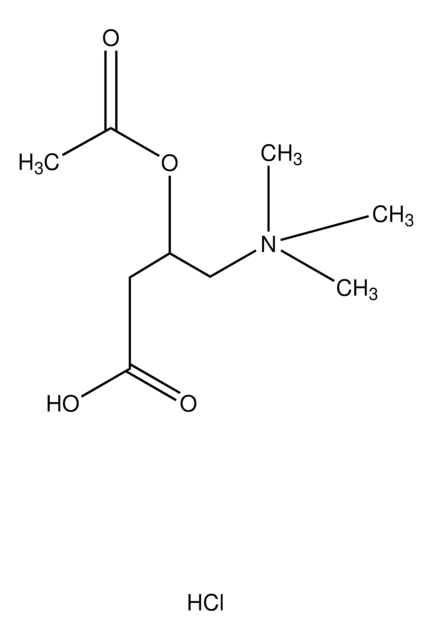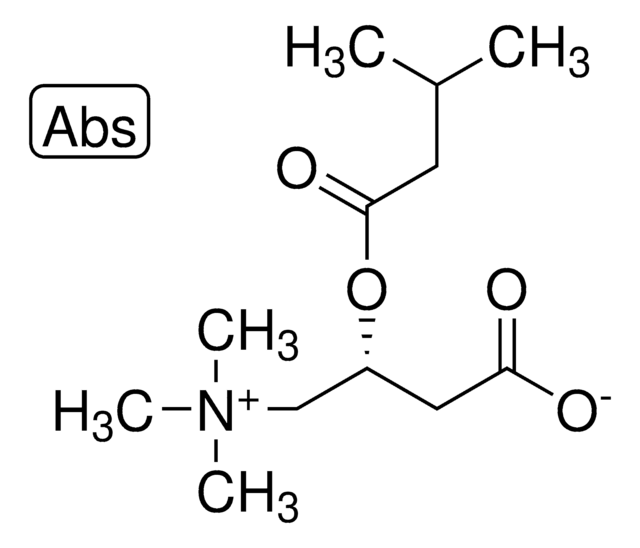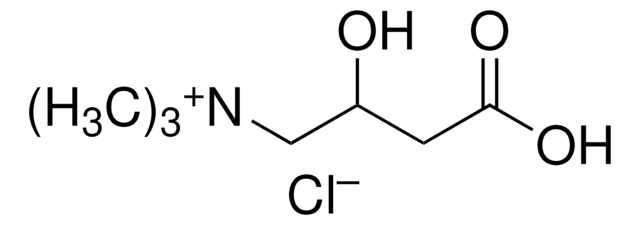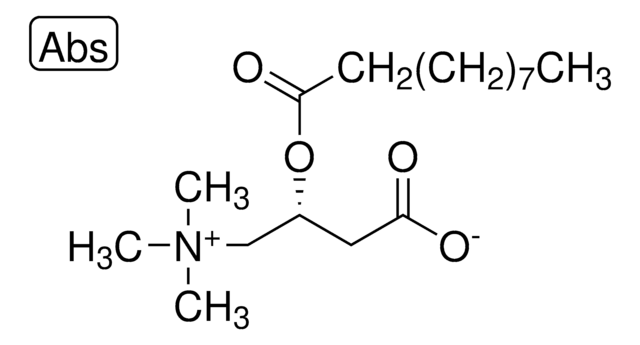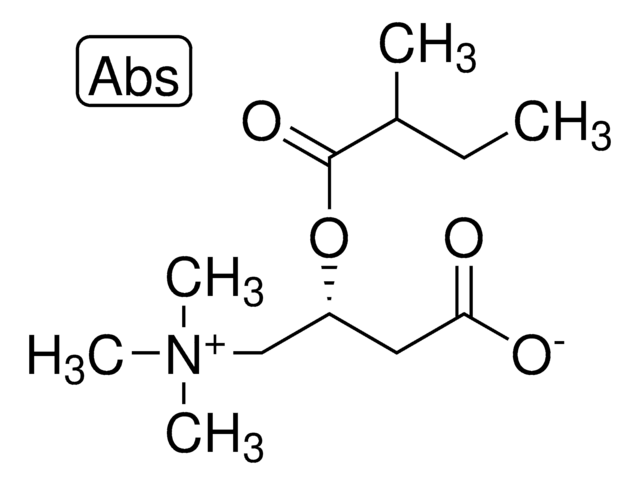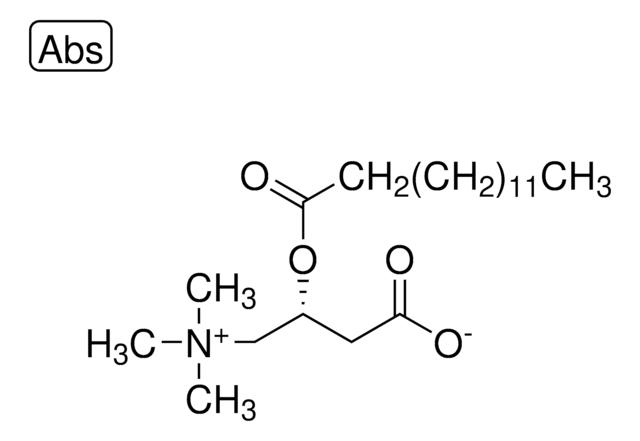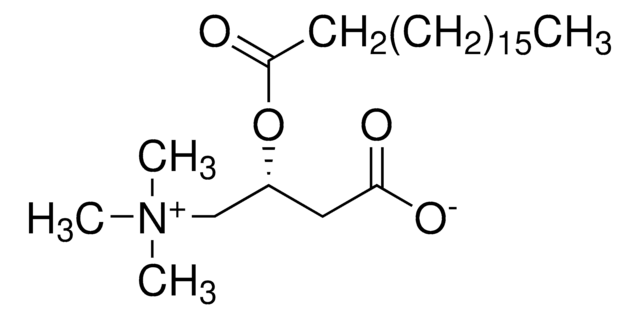A6706
O-Acetyl-L-carnitine hydrochloride
≥99% (titration)
Synonym(s):
Acetyl L-carnitine HCl, (R)-3-Acetoxy-4-(trimethylammonio)butyrate hydrochloride, ALC, ALCAR, R-(−)-2-Acetyloxy-3-carboxy-N,N,N-trimethyl-1-propanaminium chloride
About This Item
Recommended Products
product name
O-Acetyl-L-carnitine hydrochloride, ≥99% (titration), powder
biological source
synthetic
Assay
≥99% (titration)
form
powder
optical activity
[α]25/D −28°, c = 2 in H2O(lit.)
color
white to off-white
mp
194 °C
solubility
H2O: 100 mg/mL
application(s)
cell analysis
storage temp.
2-8°C
SMILES string
C[N+](C)(C)C[C@H](OC(C)=O)CC(O)=O.[Cl-]
InChI
1S/C9H17NO4.ClH/c1-7(11)14-8(5-9(12)13)6-10(2,3)4;/h8H,5-6H2,1-4H3;1H/t8-;/m1./s1
InChI key
JATPLOXBFFRHDN-DDWIOCJRSA-N
Looking for similar products? Visit Product Comparison Guide
General description
Application
- as a bioactive compound to study its effect on the proliferation of B-lymphoblastoid cell lines (BLCL) and its immune modulating properties on influenza virus specific human B and T cell responses in vitro
- as in vitro maturation (IVM) media component to study its effects on lamb oocyte blastocyst rate, ultrastructure and mitochondrial DNA copy number
- as a metabolite/chemical standard to quantify the metabolite levels in murine tumor interstitial fluid
Biochem/physiol Actions
Signal Word
Warning
Hazard Statements
Precautionary Statements
Hazard Classifications
Eye Irrit. 2 - Skin Irrit. 2 - STOT SE 3
Target Organs
Respiratory system
Storage Class Code
11 - Combustible Solids
WGK
WGK 3
Flash Point(F)
Not applicable
Flash Point(C)
Not applicable
Personal Protective Equipment
Certificates of Analysis (COA)
Search for Certificates of Analysis (COA) by entering the products Lot/Batch Number. Lot and Batch Numbers can be found on a product’s label following the words ‘Lot’ or ‘Batch’.
Already Own This Product?
Find documentation for the products that you have recently purchased in the Document Library.
Customers Also Viewed
Our team of scientists has experience in all areas of research including Life Science, Material Science, Chemical Synthesis, Chromatography, Analytical and many others.
Contact Technical Service



